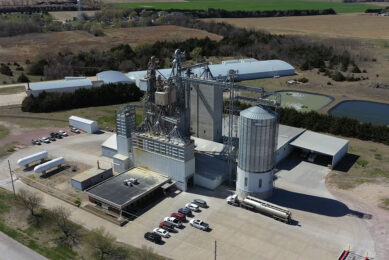Researchers unravel challenges of drug-resistant bacteria
For years, medical professionals and the livestock industry have made great efforts not to overuse antibiotics, but drug-resistant microorganisms continue to thrive.
Hua Wang of Ohio State University in the USA thinks she knows why: Antibiotic usage is just one of the factors causing resistance, she said.
"Antibiotic resistance is a complex issue. Just targeting one source is not enough to take care of the problem," said Wang, who works as a researcher with Ohio State University’s Agricultural Research and Development Centre and an associate professor of food science and technology.
In a special commentary in the Oct. 15, 2011, issue of the journal Applied and Environmental Microbiology, Wang offered an analysis of recent research on the issue. She also co-authored three of the 12 accompanying articles that stemmed from a 2009 conference she organized.
Commensals are the starter
"While most people only think about the kinds of bacteria that directly cause diseases – what we call pathogens — the genes causing resistance are in fact carried mostly by ‘commensal’ bacteria that are otherwise harmless, or even beneficial, but which can be transferred to disease-causing bacteria."
Commensal bacteria are commonly found in such foods as yogurt and cheese and are otherwise pervasive in the environment.
"We now understand that commensal bacteria are the main contributor of antibiotic resistance," Wang said "If you see antibiotic resistance coming in commensal bacteria, you can predict it will transfer to pathogenic bacteria. Once it’s in pathogenic bacteria, you’re way too late to do much about it. This is a strategic shift in attacking the problem."
In her commentary, "Antibiotic Resistance: How much do we know and where do we go from here?" Wang offers an overview of the current research on the issue, noting that antibiotic-resistant bacteria "have been found not only in various food products and environmental samples but also in hosts without a history of direct exposure to antibiotics."
In fact, one of the accompanying articles, "Acquired antibiotic resistance: are we born with it?" finds that infants as young as a few days old commonly develop large numbers of intestinal antibiotic-resistant bacteria.
In that study, Lu Zhang, a Ph.D. student in Wang’s lab, suggests that antibiotic resistance can be easily transferred from the environment to the baby, particularly from the mother, likely during birth delivery and breastfeeding.
Gut as incubator
Data from his study suggests that even a small amount of antibiotic-resistant bacteria getting into the mouth or nose (through food or other exposure) may significantly grow in the gut even without antibiotic exposure.
"The human and animal gut is like an incubator for these resistant bacteria," Wang said.
Another study in the journal, by USDA Agricultural Research Service authors, reported similar finding in organic pigs.
A group at Iowa State University reported an anti-inflammatory drug can also facilitate the development of antibiotic-resistant bacteria.
"These findings play a critical role in revealing details about how antibiotic resistance develops in the environmental, food and gut microflora," Wang said.
"These details will help scientists down the road and shed light on how we might control the problem, solving it from its root causes."
Expert recommendation
Wang said she and her colleagues have put together an expert recommendation and have submitted it to various government agencies, including the National Antimicrobial Resistance Monitoring System, a joint operation of the Food and Drug Administration, USDA, and the Centres for Disease Control and Prevention, and have published the recommendation in American Society for Microbiology’s official magazine, "Microbe."
USDA’s Agricultural Research Service has already included a focus on antibiotic resistance and commensal bacteria in its five-year strategic plan, and the content of the recommendation is also reflected in the 2011 Codex Guidelines for Risk Analysis of Foodborne Antimicrobial Resistance by WHO/FAO, Wang said.
"The overarching goal is to effectively solve the problem of antibiotic resistance," Wang said. "With the new scope and knowledge, our chance of success is greatly increased. We may not be far from achieving our goal, possibly even within the next several years."
Join 26,000+ subscribers
Subscribe to our newsletter to stay updated about all the need-to-know content in the feed sector, three times a week. Beheer
Beheer









 WP Admin
WP Admin  Bewerk bericht
Bewerk bericht